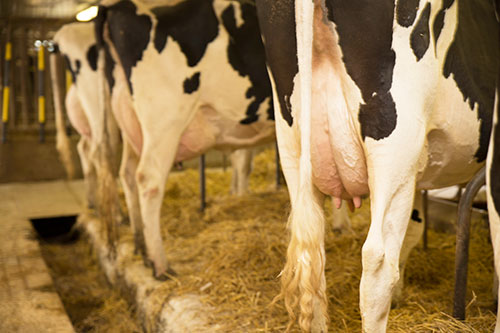
I was born and raised in Kansas on a 150-cow dairy farm where my family milks in a double-six herringbone parlor. I have traveled to a variety of farms across the U.S. and seen many different styles of management and operations including spending time in rotary and robotic parlors during milking time, but until this past Labor Day weekend, I had never milked in a tie stall barn.
After work on Friday, I packed my bags and headed north to Ran-Rose dairy in Reedsville, Wis. where Randy and Rose Geiger and their herdsman Josh Krahn agreed to teach me the ropes of milking in a tie stall facility. I found, as I moved units from cow to cow through the barn, that the rhythm and process of preparation and milking of the cows was very similar to my experiences in parlors.
What I was less prepared for was the vast amount of scraping, scooping and sweeping that followed the morning milking and calf chores. Most notably, I missed the automatic takeoffs of my dad's parlor as I caught myself hurrying back and forth in the barn in an attempt to not forget any of my charges. I also must admit I fell in the gutter once while bedding the stalls. All-in-all, I had an enlightening weekend and feel as though I have a much better understanding of the operations and challenges of tie stall facilities in which many Hoard's Dairyman readers still work.
As dairy producers and industry members, it is so easy to become entrenched in the day-to-day grind of our little piece of dairy production and lose sight of the bigger picture. However, it is opportunities like this that take us out of our comfort zones and allow us to gain a more holistic understanding of the industry we all work in whether that's in a tie stall, in a parlor or at a desk.

The author is the Special Publications editor. She is responsible for development and marketing of books and plans, as well as coordinating internal communication pieces. Maggie was raised on a 150-cow dairy near Valley Center, Kan. and graduated from Kansas State University with degrees in agricultural communications and animal sciences.








